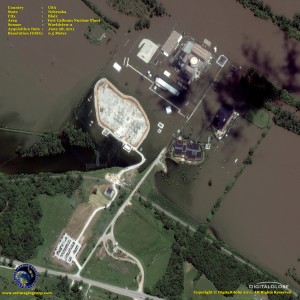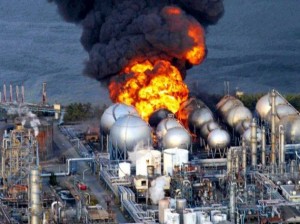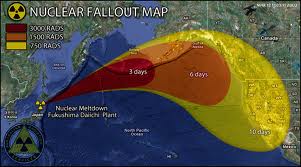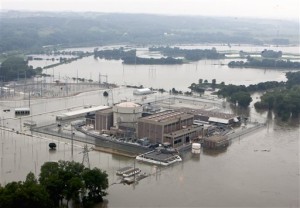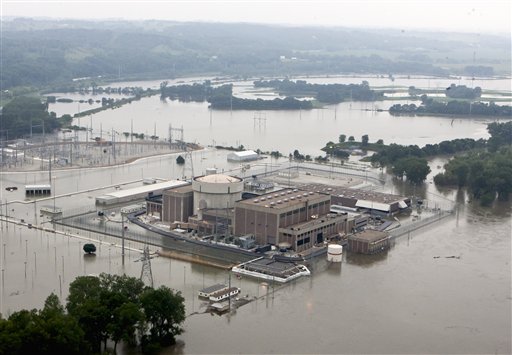The Fort Calhoun nuclear plant reopened in December, 2013. The plant, on the west bank of the Missouri River about 20 miles north of Omaha, Nebraska, closed for refueling in April, 2011, and was flooded in June, 2011. Refueling a nuclear plant typically takes about 6 – 12 weeks. Due to the flooding, the Fort Calhoun plant was closed for 970 days, from April, 2011 until December, 2013. (NY Times / Associated Press, here). Back in June, 2011, the cost estimate by David Lochbaum, Union of Concerned Scientists, was roughly $970 Million in lost revenue, plus the costs of repairs. Continue reading
Tag Archives: Fort Calhoun
Nuclear Power – State of the Art in 2013
Back in the 1960’s Nuclear Power was pitched as “Too Cheap to Meter.” Today the state of the art can be summarized in 15 words:
Chernobyl, Fukushima, San Onofre, Fort Calhoun, Indian Point, Radioactive Waste, Evacuation Plans and Emergency Response. Continue reading
Nuclear Power – Not “Carbon Free” Energy
Jeff Hanson, spokesman for the Omaha Public Power District, OPPD, in discussing the Fort Calhoun reactor, closed since April, 2011 for refueling then, in June, 2011, due to flooding, said,
“[Nuclear power is] a reliable source of electricity that’s carbon-free. That becomes more valuable going forward,” OPPD spokesman Jeff Hanson said.
This assertion that nuclear power is “carbon free” or that it produces “no greenhouse gases” is based on a simplified view of one aspect of the nuclear power – fissioning uranium – and ignores the complete picture.
While fissioning uranium does not release carbon dioxide, when we look at the entire fuel / waste cycle we see that getting uranium out of the ground, fashioning it into fuel rods, transporting the fuel rods to the plant and managing the waste requires energy, and much of this energy releases carbon dioxide.
Fort Calhoun – Still Shut Down – Since April, 2011
The Fort Calhoun Nuclear Plant, (OPPD / NRC) 19 Miles from Omaha, Nebraska, was shut-down for refueling in April, 2011. Flooded by the Missouri River in June, 2011, the plant remains shut-down. It Will Be Two Years – 2 YEARS – In April!
The Omaha Public Power District, OPPD has raised rates 6.9% to finance a $143 million repair bill. This does not include the costs to the OPPD to purchase electricity that the plant would provide – which is 25% of the power that the OPPD needs on a daily basis.. This also does not include costs to replace teflon coated wiring – which disintegrates on exposure to high levels of radiation – and costs to repair some of the plant’s support structures. This also probably does not include the costs to the district for Excelon to run the plant for the next 20 years, reported on Jan. 28, 2013, by Kevin Cole, of Omaha.com, the Omaha World-Herald, (here),
“For the first year of management work, OPPD will pay Exelon between $20 million and $26.5 million.”
In a telephone interview with me, in August, 2011, David Lochbaum, of the Union of Concerned Scientists, UCS, estimated the total cost of maintaining the plant and purchasing replacement electricity to be $1.0 million per day – roughly $600 million, to date.
By asking Exelon to run the plant, it looks like the OPPD has decided to keep the plant running. Similarly, by requiring the OPPD to do what needs to be done to bring the plant back up, it seems like the NRC has decided that this 50 year old and severely constrained nuclear power plant is worth bringing back on line. Who is asking whether or not this is a good idea? It seems to me that OPPD would be better off asking Warren Buffett, Omaha based head of Berkshire Hathaway how to manage their assets than asking Exelon to spend whatever it takes to “Bring this bad boy back on-line.”
Fort Calhoun Nuclear Plant, Update.
Back in April, 2011, the Fort Calhoun nuclear power plant, on the banks of the Missouri River about 19 miles north of Omaha, was shut down for refueling. The timing was perfect because in June, 2011, the Missouri River flooded. As pictured above, the plant that had been on the shore of the river was suddenly in the middle of the river.
THE PLANT IS STILL SHUT-DOWN – 20 Months after the incident.
Erin Golden, of the Omaha World News, told me on Dec. 19, 2012,
The plant is expected to be $129 million over budget in 2012. The OPPD [Omaha Public Power District] has set a target for the First Quarter of 2013 to bring the plant back on line. And the people at OPPD are optimistic that they will get the plant back on-line. The NRC, however, is not optimistic.
Nuclear Power, One Year After Fukushima
 In the 54 years between 1957, when the Price Anderson Act was passed, and 2011 we have:
In the 54 years between 1957, when the Price Anderson Act was passed, and 2011 we have:
- Experienced four melt-downs and one partial melt-down at nuclear power plants,
- An increasing amount of radioactive waste that we really don’t know how to deal with, but must manage for hundreds of years – or thousands.
- Security Concerns. Sharif Mobley, an American, arrested in Yemen in March, 2010, suspected of being a covert agent of Al Queda connected to Anwar Al Awlaki (CS Monitor), and who, before going to Yemen, worked at nuclear power plants in New Jersey, Pennsylvania, and Maryland (NJ News Room).
The World Nuclear Association has a detailed summary of the state of the industry (here), at Popular Logistics, We have concluded that a thorough understanding of the dynamics of the system and the risks from existing or future nuclear plants demands a paradigm shift to efficient use of sustainable energy.
The people of Fukushima – and Japan – are concerned that their food is “salted” with radioactive isotopes from the three reactors that melted downs. And they don’t trust their government. They feel it is too trusting of the people in the nuclear power industry (NPR). And we see the same cozy relationship between the regulatory agencies and the regulated industry in the United States. (PopularLogistics).
The “No More Fukushimas” walk from Oyster Creek to Vermont Yankee continues – and it will pass Indian Point today, March 11, 2012 (here).
The Japanese have closed 52 of their 54 nuclear power plants.
In the US, eight plants, from North Carolina to Connecticut were closed in August, 2011 because of Hurricane Irene. Two plants in Virginia were closed because of an earthquake. Fort Calhoun, the plant that was built on the bank of the Missouri River, near Omaha, Nebraska, that was shut down in May, 2011 for refueling and kept off-line due to heavy rains in June 2011 and 9 months later remains shut down. While the distribution of radioactive isotopes is minimal, and mostly tritium, the financial cost (not counting waste cleanup) is $1.0 million per day. These costs will be carried on the shoulders of the ratepayers, not the owners of the plant (here).
When Excelon whined that “upgrading Oyster Creek would cost too much; they would have to close it down,” Gov. Chris Christie said “Ok, then close it down.” The folks in Georgia are not as bold as the Honorable Governor of New Jersey. When Georgia Power said “In order to build two new 1.17 GW reactors at the Vogtle complex, we need to charge ratepayers for construction before we break ground, the NRC said “OK, and here are loan guarantees” (here).
But Georgia is the exception to the rule. Mycle Schneider, describing the Worldwatch Report he wrote on nuclear power last year, said (Press Release / Report):
“The industry was arguably on life support before Fukushima. When the history of this industry is written, Fukushima is likely to introduce its final chapter.”
Amory Lovins, of the Rocky Mountain Institute, in the foreword to the report, wrote,
“The Fukushima accident has just vaporized the balance sheet of the world’s #4 power company, TEPCO… this … could cost $100-plus billion… with such an unforgiving technology, accidents anywhere are accidents everywhere.”
Popular Logistics is a blog. We have the resources to write one or two articles per week, and cover a variety of issues. The professional news media, i.e., The New York Times, National Public Radio are able to commit substantial resources to these issues.
Nuclear Crisis in Japan will lead you to a collection of articles about Japan, Fukushima and the future of nuclear power from the Federation of American Scientists (FAS)
Matthew L. Wald (preceding link to Mr. Wald’s posts on the Green Blog, Transcripts Show U.S. Confusion Early in Japan Nuclear Crisis ; (on NYTimes.com)
Andrew C. Revkin, Nuclear Risk and Fear, from Hiroshima to Fukushima from the Dot Earth Blog, also of The Times,
Mr. Wald, again, Sizing Up Health Impacts a Year After Fukushima.
We now are experiencing the effects of four melt-downs and one partial melt-down in the 54 years since the Price Anderson Act was signed. This is four melt-downs too many. This is one meltdown every 13.5 years, one melt-down or partial melt-down every 11 years. While this is too small for statistical analysis, there have been melt-downs at four of the world’s 440 nuclear power plants. That’s a small number – about 0.9%. But the accidents were and remain catastrophic.
And in addition, nuclear power is expensive in terms of time and money for new plants (NPR). It’s too expensive for investors given the choice; that’s why Georgia Power asked for – and got – loan guarantees and permission to charge ratepayers in advance for the money to build the Vogtle 3 and 4 plants (here).
As noted above:
We must understand the dynamics of the system and risks from existing or future nuclear plants and shift the paradigm to efficient use of sustainable energy.
Nuclear Power – or Un Clear Power
The Nuclear Regulatory Commission, NRC, has voted to allow Georgia Power to spend $14 Billion of ratepayer monies to build two reactors, Vogtle 3 and 4 near Waynesboro, Georgia. These would be the first new nuclear plants in the US in 35 years. Opponents say “we don’t need the power, but the utility wants the revenue stream.” Supporting this allegation Georgia Power plans to charge ratepayers – customers – for the costs of construction WHILE BUILDING THE PLANTS – BEFORE THE ARE ONLINE. see Georgia Power – Nuclear – Recovering Financing Costs.
Scott Peterson, of the Nuclear Energy Institute, was quoted on Morning Edition on Friday, 2/10/12, here, ” saying,
Nuclear plants, because they are very large, 24/7 power producers, really anchor the entire U.S. grid for electricity,”
He also said,
“Gas prices are unpredictable, and so is energy from wind and solar.”
He’s wrong on all three counts.
- Gas prices are rising. They may be difficult to predict on a day to day basis, but the trend is upward.
- Similarly, solar and wind are also predictable. The Department of Energy, DoE, knows precisely how much wind and sun passes over every square inch of the United States, and how much sunlight hits every square inch of the United States over the course of a year. And how much electricty a wind turbine or a photovoltaic solar energy system will produce anywhere in the US. The PVWatts solar calculator, for example,here, http://www.nrel.gov/rredc/pvwatts/, tells you how much power a solar array will produce over the course of a year.
- And nuclear is not 24 x 7. While the waste is 24 hours by 7 days per week by 365 days per year by ten thousand years, nuclear plants are not 24 by 7 days by 365. They are more like 24 by 7 by 350; they are shut down for about a month for refueling every 18 months. Nuclear plants are also shut down unexpectedly due to events like hurricanes, earthquakes, floods.
The Fort Calhoun reactor, on the Missouri River in Nebraska was shut down for refueling in May, 2011 . It stayed shut down due to flooding. It was offline throughout the summer and fall, (my coverage here and here) and as far as I know it is still offline. According to David Lochbaum, of the Union of Concerned Scientists, the shutdown cost the plant’s owners $1 million per day – $100 million if it was brought back online in September, $250 million if it is still offline. And I would hazard a guess that the owners asked for and received permission to charge the ratepayers those $1.0 million per day. (As far as I know the plant is still offline. I will update this post when I have more information.)
Regarding the Vogtle plants … the plan is to build two Westinghouse AP 1000 pressurized water reactors, here. Theses are 1154 MWe plant, that, according to Westinghouse,
“use the forces of nature and simplicity of design to enhance plant safety and operations and reduce construction costs.”
They are forecast to cost $14 Billion. $14 Billion divided by 2,308 MWe is $6.065 per MWe. That does not include the costs of security, fuel or waste management
Solar and wind costs less, takes a lot less time to deploy, do not require fuel, do not produce dangerous toxic wastes, do not present a target to terrorists and do not require special security infrastructures.
Why the TVA Wants Nuclear Power
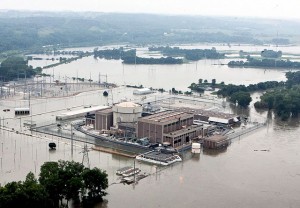 In “Why We Still Need Nuclear,” the “op-ed” piece written in the New York Times, July 30, 2011, Tom Kilgore, the President and CEO of the Tennessee Valley Authority, seems to have made up his mind to attempt to complete the Bellefonte 1 nuclear power plant, in Hollywood, Alabama. Mr. Kilgore is in good company: the President of Iran, Mahmoud Achmadinejad, also wants to build nuclear power plants.
In “Why We Still Need Nuclear,” the “op-ed” piece written in the New York Times, July 30, 2011, Tom Kilgore, the President and CEO of the Tennessee Valley Authority, seems to have made up his mind to attempt to complete the Bellefonte 1 nuclear power plant, in Hollywood, Alabama. Mr. Kilgore is in good company: the President of Iran, Mahmoud Achmadinejad, also wants to build nuclear power plants.
The TVA began work on the Bellefonte nuclear plants in 1974. Construction was suspended in 1988, after the TVA spent about $4.1 Billion on the plant. The TVA wants to spend another $5 Billion over the next six to eight years to complete the plant. It would therefore cost a total of $9.1 Billion to construct a 1.26 gigawatt plant. That’s $7.22 Billion per gigawatt, plus interest, over a period that spans 34 years, with construction in three phases: 14 years of work from ’74 to ’88, 22 years of non-work, from ’88 to 2012, and another six to eight years of work. (Times Free Press, TVA News, TVA Environment).
This suggests the real reason why the TVA wants to complete the plant. Currently Bellefonte 1 a $4.1 billion liability on the TVA’s books. If the TVA adds another $5 Billion, this $4.1 hot white elephant will be magically transformed into a cool (but heat producing) 9.1 billion asset. Continue reading
Fort Calhoun Nuclear Plant – Update
![]() Tweet The flooded Fort Calhoun nuclear power plant is not exactly like the nuclear plants at Fukushima Daichi and Fukushima Diana. There are three main differences: First of all, there’s one plant, not 12. The difference of scale is tremendous. Secondly, it was offline – shut down for refueling – when flooded. Meaning, we got lucky, really lucky. Finally, it was hit by the gradually increasing pressures of rising floodwaters, not by an earthquake, a tsunami, and aftershocks. This is huge!
Tweet The flooded Fort Calhoun nuclear power plant is not exactly like the nuclear plants at Fukushima Daichi and Fukushima Diana. There are three main differences: First of all, there’s one plant, not 12. The difference of scale is tremendous. Secondly, it was offline – shut down for refueling – when flooded. Meaning, we got lucky, really lucky. Finally, it was hit by the gradually increasing pressures of rising floodwaters, not by an earthquake, a tsunami, and aftershocks. This is huge!
Steve Everly, at the Kansas City Star, reported that David Lochbaum of the Union of Concerned Scientists was “Reassured.” (here). I spoke to Mr. Lochbaum about the flooded plant on June, 29, 2011.
Most of the releases of radioactive material, generally tritium and tritiated water, occur when plants are online. Because the plant was offline, very little radioactive material has been released into the biosphere as a result of the flooding. While it is easy to filter heavy metals, it is very expensive to isolate tritiated water from water.
The damages due to the flooding are likely to be in the ballpark of $1,000,000 per day in lost revenue – $23 Million since June 6 – because the plant produces power worth about $1,000,000 per day. The buildings that have been damaged are collateral buildings, not the reactor itself. Those buildings would be less expensive to repair than the reactor.
At 35 years old, the plant is near the end of its design life. While we can engineer plants that are as safe as the NRC requires, new wind, solar, geothermal, hydro, and efficiency cost less than new nuclear or coal with carbon sequestration. Safety, security, and waste management are not the challenges with sustainable technologies that they present with nuclear and coal. Therefore, it seems logical to consider that once it is decommissioned, the plant will be replaced with wind, solar, geothermal, hydro, and efficiency.
Flooding at Nebraska Nuclear Power Plants
![]() Tweet Omaha, Nebraska. Flooding on the Missouri River at The Cooper and Fort Calhoun nuclear power stations. I suppose the good news is that given the flooding, one or both of these two Nebraska plants will be decommissioned after the floodwates recede, so there will soon be one or two fewer nuclear plants operating in the United States. And terrorists will have a difficult time attacking these plants now that they are surrounded by a moat. The real good news, if you can call it that, is that these floods are the result of heavy rains, not a tsunami triggered by an earthquake. The pressures are different. It is a steady buildup and which will be followed by steady decrease. It is not the surge / vacuum of a tsunami. And there was no earthquake and series of aftershocks.
Tweet Omaha, Nebraska. Flooding on the Missouri River at The Cooper and Fort Calhoun nuclear power stations. I suppose the good news is that given the flooding, one or both of these two Nebraska plants will be decommissioned after the floodwates recede, so there will soon be one or two fewer nuclear plants operating in the United States. And terrorists will have a difficult time attacking these plants now that they are surrounded by a moat. The real good news, if you can call it that, is that these floods are the result of heavy rains, not a tsunami triggered by an earthquake. The pressures are different. It is a steady buildup and which will be followed by steady decrease. It is not the surge / vacuum of a tsunami. And there was no earthquake and series of aftershocks.
